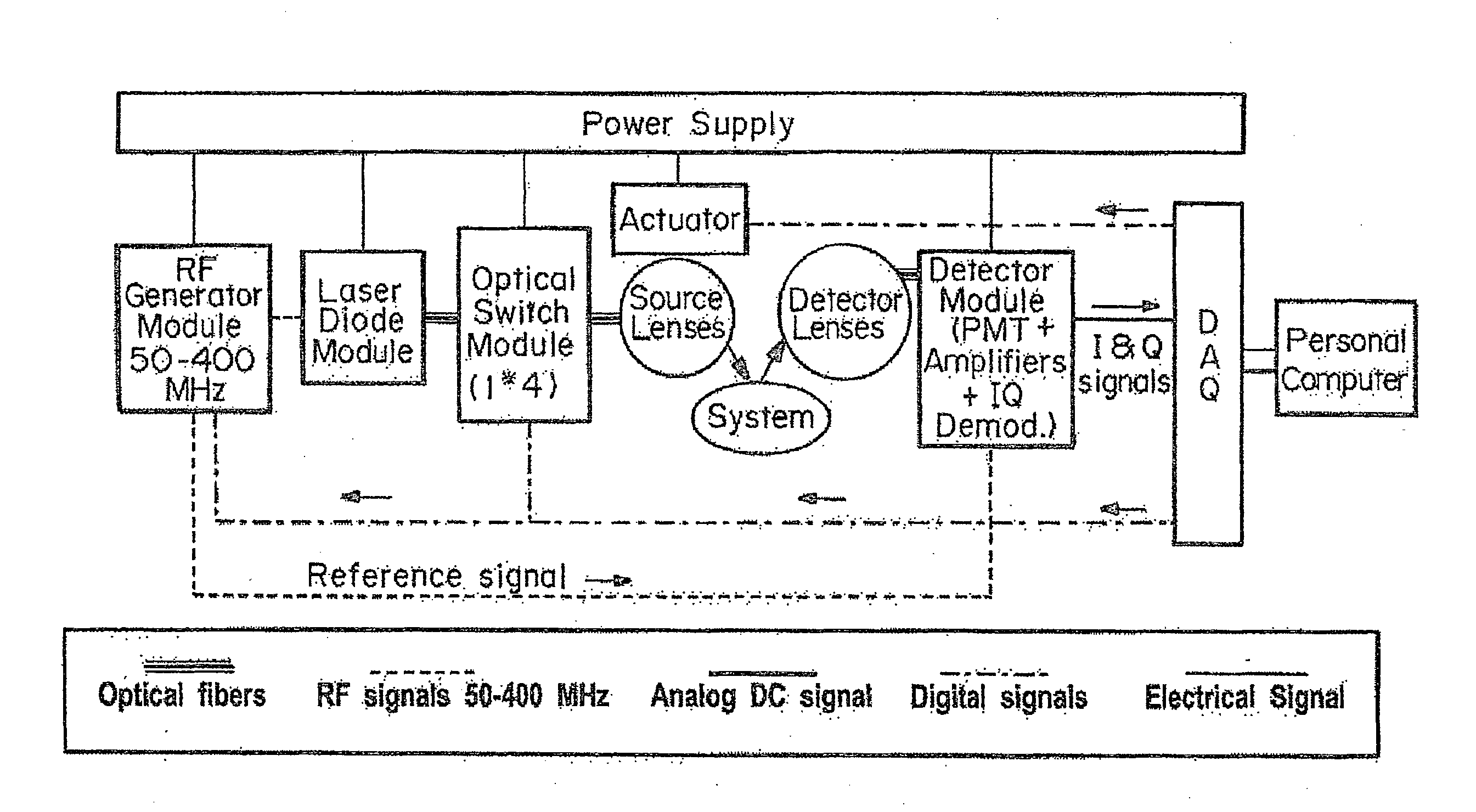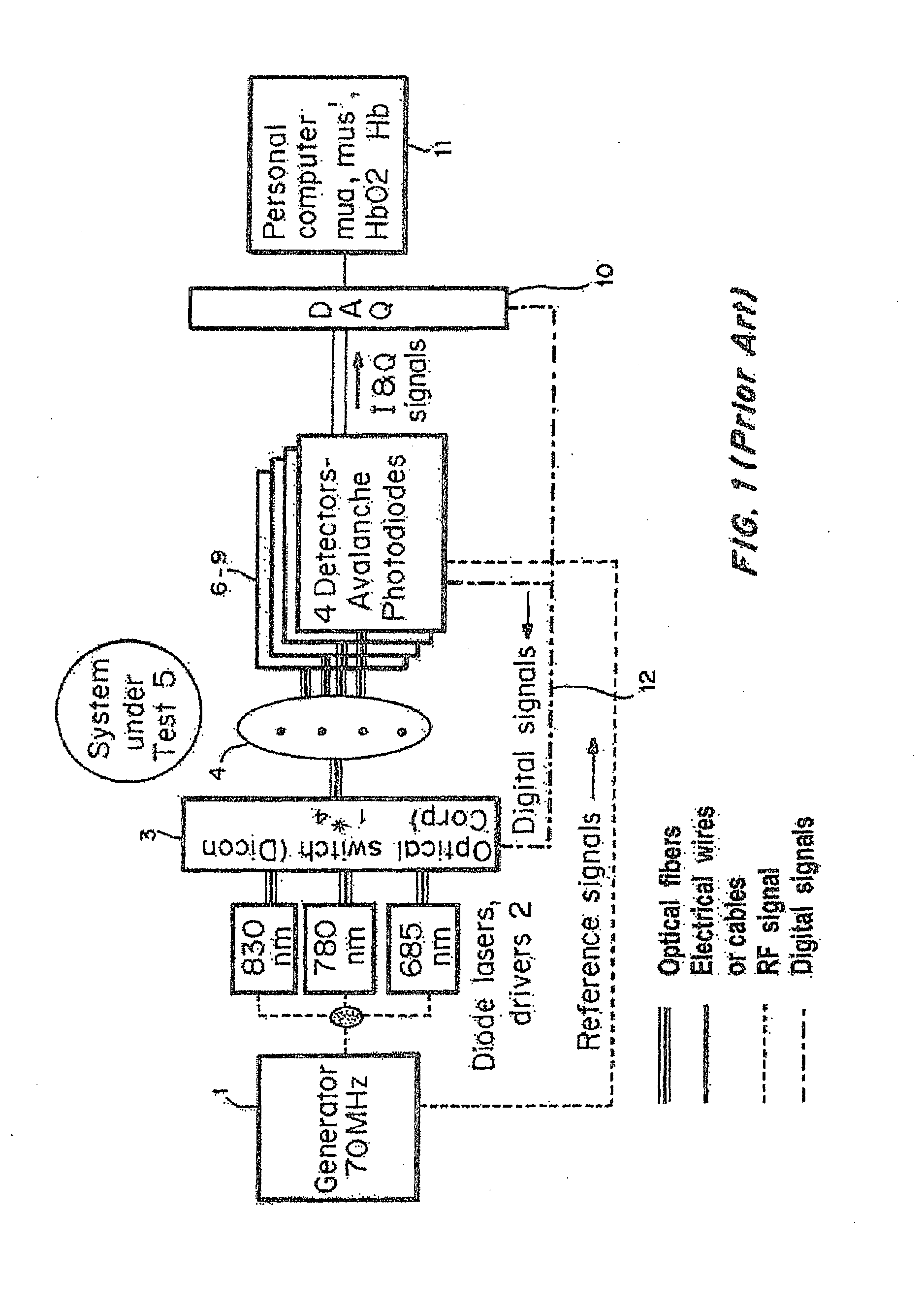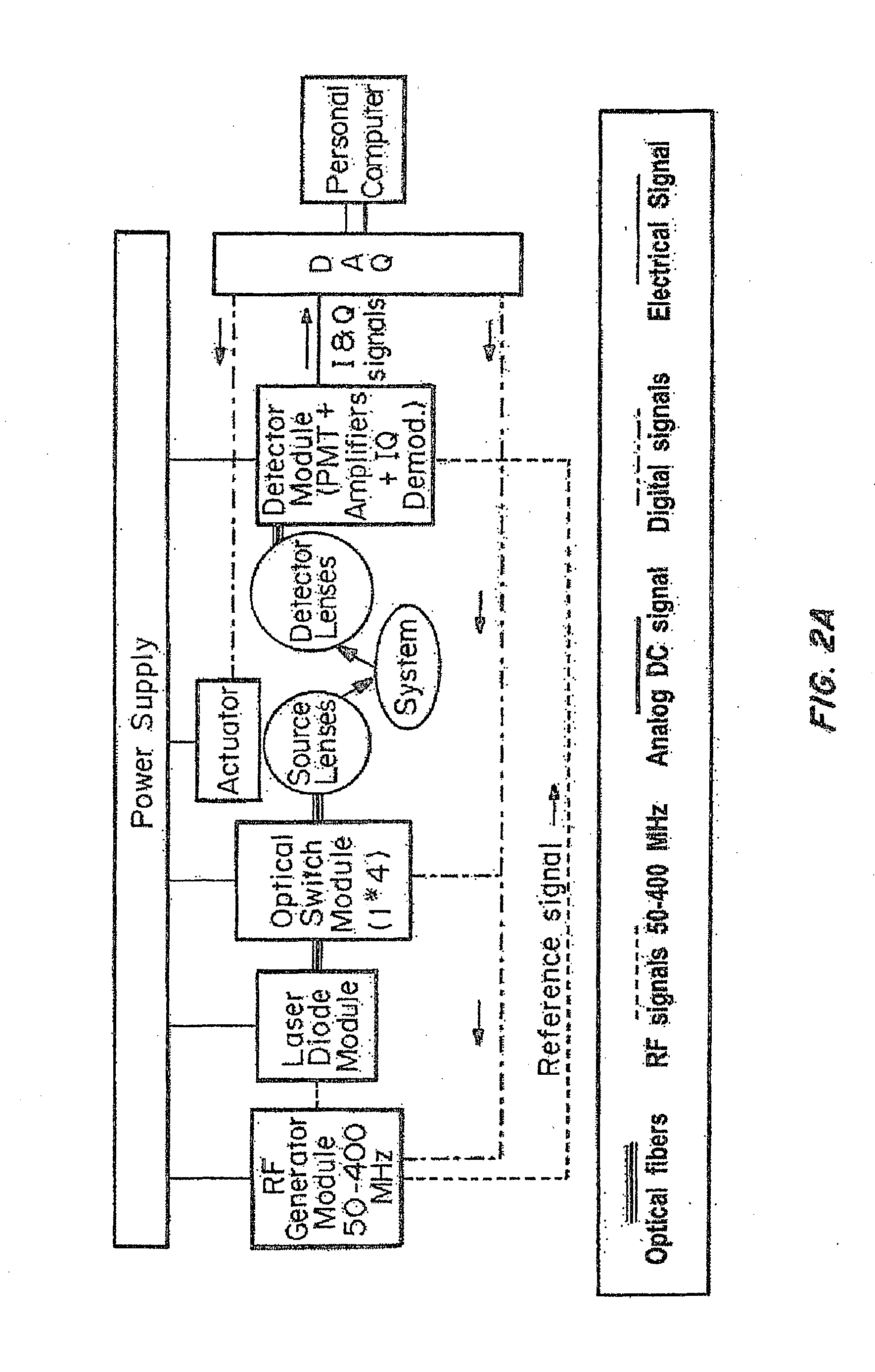Non-invasive multi-frequency oxygenation spectroscopy device using nir diffuse photon density waves for measurement and pressure gauges for prediction of pressure ulcers
a multi-frequency oxygenation and spectroscopy technology, applied in the field of frequency domain near infrared absorption devices, can solve the problems of device inability to obtain absolute values of absorption scattering coefficients, inability to contact with wounds, and inability to obtain contact probes with flexible rearranging of detector fibers, etc., to evaluate the efficacy of hyperbaric oxygen treatment and evaluate the effectiveness of wound and burn gels
- Summary
- Abstract
- Description
- Claims
- Application Information
AI Technical Summary
Benefits of technology
Problems solved by technology
Method used
Image
Examples
example 1
Experimental Data and Device Calibration
[0080]As with any optical detector, the APD module has a limited range where the electrical output signal is linearly proportional to the optical power of the incident light. Prior to in vitro or in vivo experiments, a calibration procedure is conducted to define the range of linearity. Any subsequent measurements which falls outside of the range of linearity is discarded and retaken after adjusting the amplitude of the signal using the optical attenuators. The results from the linearity test performed at a modulation frequency of 80 MHz are presented on FIG. 9. The linear range (slope of 0.98) observed for the APD indicates excellent detector linearity over the range of 1 to 185 mV.
Offset Testing
[0081]Offset values (i.e., voltage registered by the detector when there is no incident light) of the device were measured while changing the modulation frequency from 50 to 350 MHz. Results are shown in FIG. 10. The offset v...
example 2
Animal Study Results
[0087]An animal study for in vivo validation of the device was conducted. The purpose of the study was to differentiate superficial and deep burns using the optical data. Data analysis suggests a statistically significant difference between the optical properties of deep and superficial wounds. An in depth description of the results and study procedures follows:
Study Procedures
[0088]A Yorkshire swine weighing approximately 25 kg was purchased and transported to the DUCOM facilities. The animal was acclimated for a period of one week. Baseline measurements of healthy intact animal skin were taken following the acclimation period. Anesthesia was induced by mask prior to measurements and the animal's hair was clipped to improve the accuracy and reliability of the measurements. The animal was intubated and mechanically ventilated to control the rate of breathing and reduce motion artifacts during measurements. After hair removal, eight wound sites were symmetrically ...
example 3
Design of Probe for Non-Invasive Measurement
[0104]In exemplary embodiments, the probe described herein is used with a device the size of a small desktop computer, and the probe is gently placed on the surface of intact skin to assess tissue damage at multiple depths. Ideally, the probe could be manually held in place by a nurse at any anatomical location where DTI is suspected, and the measurement could be completed in less than one minute. The computer would immediately provide the clinician with a depth-profile of tissue oxygenation at depths ranging from 1-10 mm. The depth of bone within this range would be clearly indicated, and regions of impaired tissue oxygenation could be clearly seen.
[0105]In many cases, such a simple measurement protocol might not provide sufficient information to distinguish healthy from damage tissue with acceptable sensitivity and specificity. A more complex protocol may provide more information. When pressure is applied to the skin over bony prominence...
PUM
 Login to View More
Login to View More Abstract
Description
Claims
Application Information
 Login to View More
Login to View More - R&D
- Intellectual Property
- Life Sciences
- Materials
- Tech Scout
- Unparalleled Data Quality
- Higher Quality Content
- 60% Fewer Hallucinations
Browse by: Latest US Patents, China's latest patents, Technical Efficacy Thesaurus, Application Domain, Technology Topic, Popular Technical Reports.
© 2025 PatSnap. All rights reserved.Legal|Privacy policy|Modern Slavery Act Transparency Statement|Sitemap|About US| Contact US: help@patsnap.com



